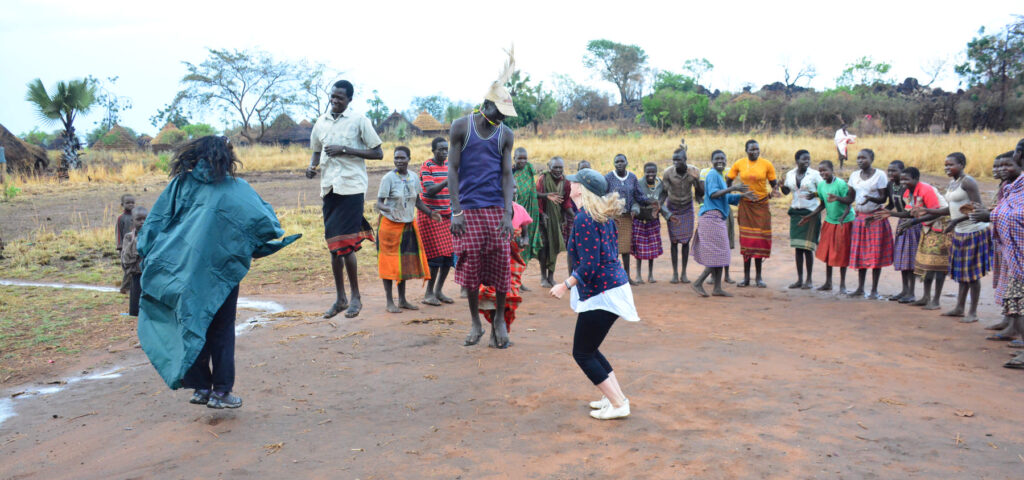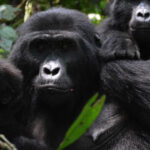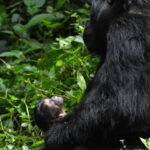On October 9th is Uganda Independence Day — a moment to honor its resilience, diversity, and beauty. Nestled in the heart of East Africa, Uganda is often called “The Pearl of Africa”, a title first given by Winston Churchill in 1908, who was captivated by its landscapes, wildlife, and people.
Today, that same wonder continues to draw travelers from around the world — from royalty and presidents to filmmakers, explorers, and everyday adventurers seeking something real, raw, and remarkable.
Where the World’s Longest River Begins
Uganda holds one of the most fascinating geographical treasures on earth — the Source of the Nile. Flowing from Lake Victoria in Jinja, this mighty river journeys northward through eleven countries to Egypt and the Mediterranean Sea.
For centuries, explorers sought this very origin. Today, visitors can stand where the Nile begins, watching its first surge of white water — or even raft it themselves on world-class rapids.
Snow on the Equator: The Rwenzori Mountains
Few things surprise travelers more than seeing snow-capped peaks in Uganda, a country straddling the Equator. Yet the Rwenzori Mountains, also known as the Mountains of the Moon, rise to over 5,000 meters and are crowned with glaciers that glitter year-round.
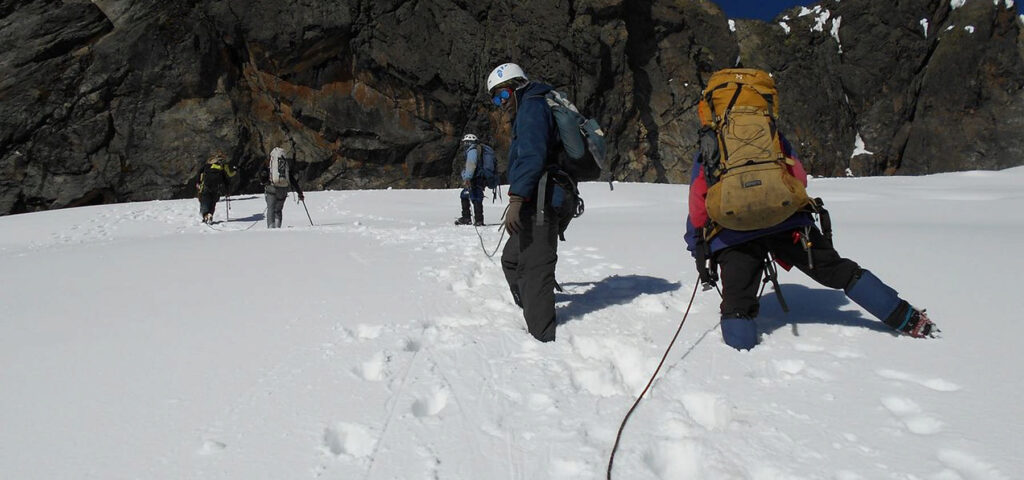
These peaks are among Africa’s greatest natural spectacles — snow-capped summits, high-altitude moorlands, and glaciers clinging near the equator. Among the six major peaks, Mount Stanley (Margherita Peak) is the third highest in Africa after Kilimanjaro and Mt. Kenya, rising to about 5,109 m, with glaciers at high elevations.
A UNESCO World Heritage Site, the Rwenzoris are famed for their otherworldly vegetation, ancient moss forests, and challenging climbs. Their glaciers — rare in Africa — are a reminder of Uganda’s ecological uniqueness and the importance of preserving these fragile wonders.
A Safari Destination for Legends
Uganda’s wilderness has long enchanted explorers and world figures. In the early 20th century, Theodore Roosevelt came on safari here, documenting his journey in African Game Trails. Later, Ernest Hemingway survived not one but two plane crashes near Lake Albert during his own Ugandan adventure in the 1950s.
The royal fascination continues to this day. Queen Elizabeth II visited Uganda in 1954, lending her name to Queen Elizabeth National Park, one of Africa’s most biodiverse landscapes. Before her, King Edward VIII (then Prince of Wales) visited in the 1920s — enjoying a golf and safari holiday in Entebbe, where he famously played at the Entebbe Golf Club, the oldest golf course in East Africa (established in 1901).
A Royal Round: The Oldest Golf Course in East Africa
For something delightfully unexpected, tee off at the Entebbe Golf Club, founded in 1901. This 18-hole course beside Lake Victoria is the oldest golf course in East and Central Africa.
In colonial days, visiting dignitaries — including Prince Edward (later King Edward VIII) — played rounds here between safaris. The fairways are still lined with tall pines, and the afternoon breeze off the lake makes it an unforgettable experience.
Local golf legend Daniel “Dan” Nkata became the first Ugandan member here, later helping to design the modern 18-hole layout. His legacy is honored at the course’s final hole, fondly nicknamed Danny Nkata Drive.
For today’s traveler, golf and safari in one trip?
Uganda on the Silver Screen
Uganda’s breathtaking scenery has also inspired filmmakers. The 1930s classic “The African Queen”, starring Humphrey Bogart and Katharine Hepburn, was shot partly on Uganda’s lakes and rivers. More recently, The Last King of Scotland and various nature documentaries have showcased Uganda’s lush landscapes and wildlife to the world — from the misty forests of Bwindi to the thundering Murchison Falls, where the Nile explodes through a narrow gorge.
Where Wildlife Still Rules the Wild
Uganda remains one of the most biologically rich countries on earth — home to more than half of the world’s remaining mountain gorillas, vast populations of chimpanzees, and all of Africa’s iconic Big Five. Its forests, savannas, and wetlands shelter over 1,000 bird species, making it a paradise for nature lovers and photographers alike.
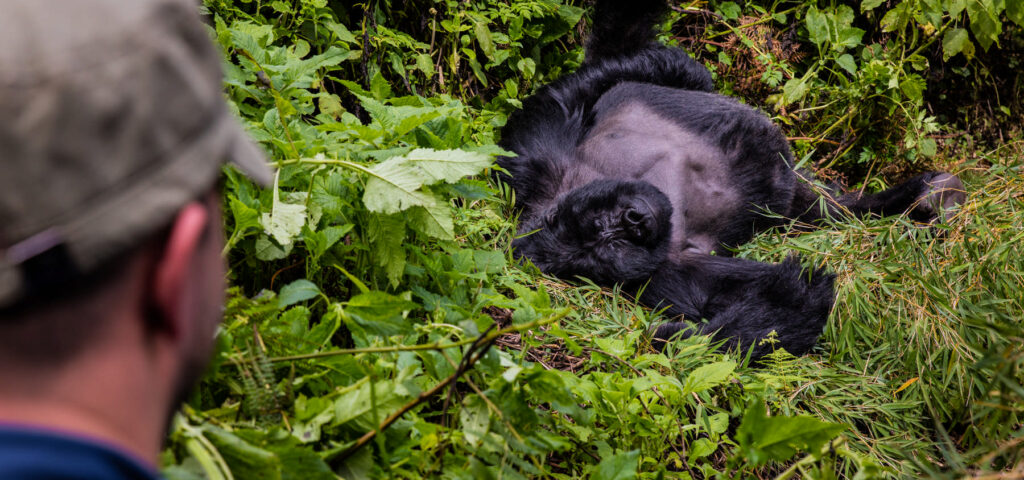
From the misty trails of Bwindi Impenetrable National Park to the savannah plains of Queen Elizabeth and Murchison Falls, and the chimp-filled canopies of Kibale Forest, Uganda offers a safari experience that feels intimate, wild, and deeply moving.
This natural splendor continues to attract modern-day explorers and global icons. In recent years, Uganda has hosted an array of celebrities, conservationists, and filmmakers drawn to its authenticity — among them Ellen DeGeneres and Portia de Rossi, who visited to support gorilla conservation; Idris Elba, who has explored the country’s music and heritage; and various nature documentary teams who’ve filmed Uganda’s great apes, rare shoebills, and thunderous waterfalls.
Each visit reaffirms what travelers have known for generations — that Uganda’s magic lies in its ability to connect people deeply to nature and to themselves.
A Country Once Considered for a New Nation
Few know that in the early 1900s, Uganda was briefly considered as a potential homeland for Jewish settlers under the British “Uganda Scheme.” While ultimately rejected, the idea highlights Uganda’s historic role as a crossroads of nature, culture, and humanity.

That spirit of openness would appear again decades later during World War II, when Uganda welcomed thousands of Polish refugees fleeing the war in Europe. Entire communities — families, children, and the elderly — found refuge and hope in Uganda’s towns and settlements such as Koja, Masindi, and Nyabyeya. It was a remarkable chapter in which Ugandans shared their land and compassion with people from across the world, long before global humanitarianism became a formal ideal.
Today, as we mark yet another Uganda Independence Day, the nation continues this legacy, hosting one of Africa’s largest refugee populations, many of whom are welcomed into local communities with warmth and dignity — a reflection of the same spirit that has defined this nation for generations.
The Warmth of Uganda’s People
Above all, what makes Uganda truly unforgettable is its people. Whether you’re trekking for mountain gorillas in Bwindi, cruising the Nile at sunset, or walking through a village in Fort Portal, you’re met with a warmth that feels genuine — not performed.
Ugandans are known for their hospitality, humor, and grace, something every traveler remembers long after they leave. It’s this friendliness that has kept Uganda on countless “most welcoming countries” lists and has made it a top choice for travelers seeking meaningful, human connections alongside natural wonder.
A Country of Hidden Luxury and Deep Adventure
Today, Uganda blends wild adventure with refined comfort. Boutique lodges overlook crater lakes and jungle valleys. Conservation tourism thrives alongside community development. And the experiences — from chimpanzee tracking and birding to golfing beside Lake Victoria — continue to define Uganda as a destination of depth and authenticity.
At 63 — Still the Pearl of Africa
As Uganda turns 63, it remains one of the world’s most inspiring travel stories: a country that holds ancient secrets, extraordinary beauty, and unbreakable spirit.
To travelers who seek meaning in every mile — who value authenticity over spectacle — Uganda offers something truly rare: a sense of discovery that still feels new.
Happy Independence Day, Uganda.
Here’s to the next 63 years of adventure, resilience, and beauty — from the Source of the Nile to the snows of the Rwenzoris.
